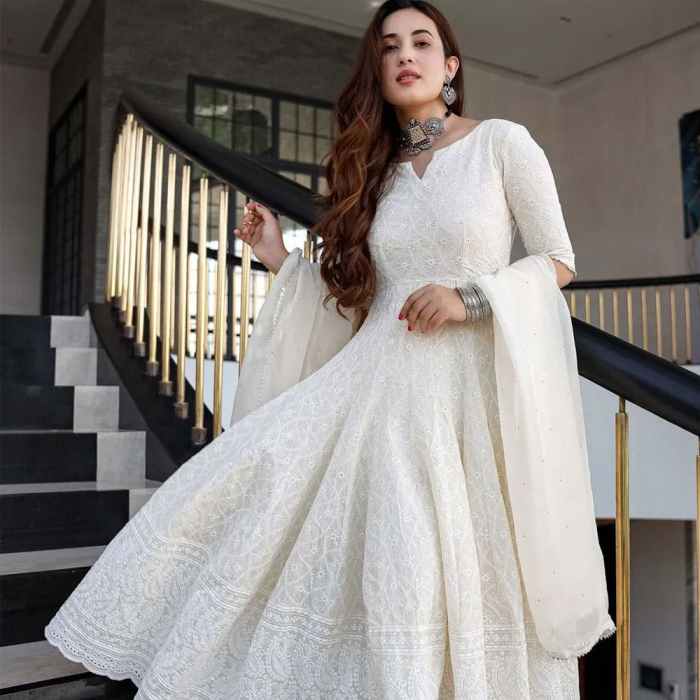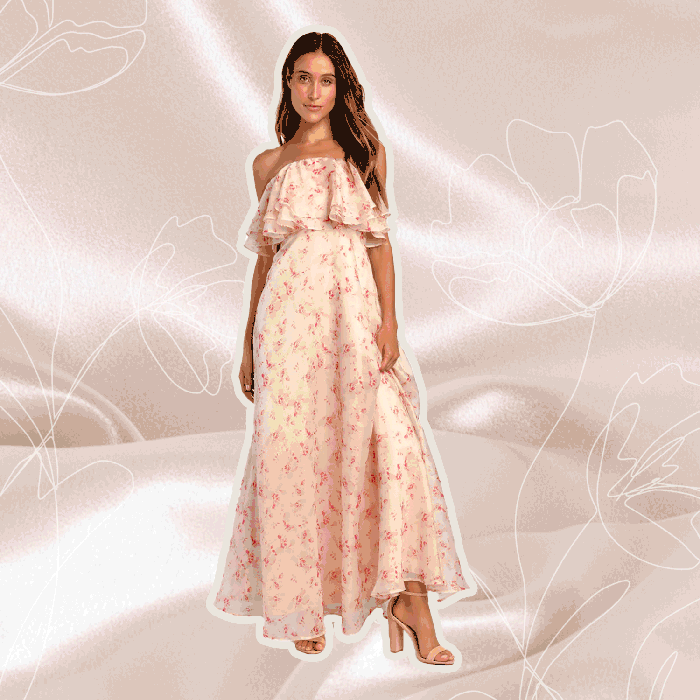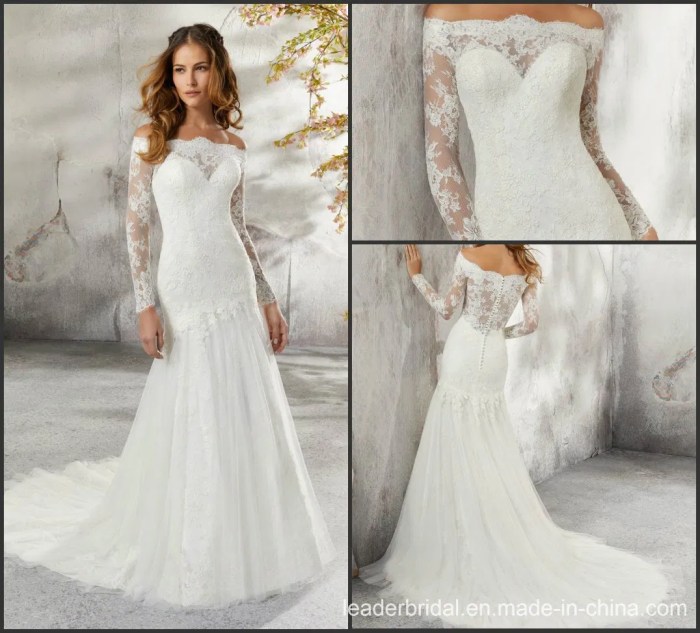Types of Indian Wedding Wear Dresses
Indian wedding wear dresses – Indian wedding attire boasts a rich tapestry of styles, varying regionally and reflecting diverse cultural influences. From the elegant drape of a saree to the regal grandeur of a lehenga, the choices are vast and reflect the bride’s personal style and the occasion’s formality.
Types of Indian Wedding Dresses and Their Regional Variations
Several dress types are staples in Indian weddings, each with unique regional interpretations.
| Dress Type | Description | Occasion | Common Fabrics |
|---|---|---|---|
| Saree | A long piece of unstitched fabric draped around the body, paired with a blouse. | Weddings, festivals, formal events | Silk, Banarasi silk, Kanjeevaram silk, chiffon, georgette |
| Lehenga Choli | A three-piece ensemble consisting of a long skirt (lehenga), a short blouse (choli), and a dupatta (scarf). | Weddings, formal events | Silk, brocade, velvet, net, tissue |
| Anarkali Suit | A long, flowing kurta with a flared skirt, often paired with churidar pajamas or salwar. | Weddings, receptions, formal parties | Silk, chiffon, georgette, net |
| Gown | A Western-style dress, often incorporating Indian embellishments and fabrics. | Cocktail parties, receptions | Silk, velvet, net, lace |
| Sharara | A loose, wide-legged trouser paired with a kurta or choli. | Weddings, Mehndi ceremonies | Silk, cotton, georgette |
Regional variations significantly influence the style and design of these dresses:
- Gujarat: Gujarati sarees are known for their vibrant colors, intricate bandhani (tie-dye) patterns, and use of rich silks.
- Bengal: Bengali sarees often feature intricate weaving techniques like Baluchari, with depictions of mythological scenes or nature.
- Punjab: Punjabi suits, including Patiala salwars and phulkari embroidery, are characterized by their bold colors and rich embellishments.
- South India: Kanjeevaram silk sarees from Tamil Nadu are renowned for their gold zari work and heavy embellishments.
Silhouette Comparison for Different Body Types
Different dress silhouettes flatter different body types.
| Silhouette | Description | Suitable Body Types |
|---|---|---|
| A-line | Flared from the shoulders, creating an A-shape. | Most body types |
| Mermaid | Fitted through the hips and flares out at the knees. | Hourglass, pear |
| Empire Waist | Fitted at the bust and flows loosely from the empire waistline. | Apple, pear |
| Straight/Column | Fitted from top to bottom. | Rectangle, hourglass |
Fabrics and Embellishments Used in Indian Wedding Dresses
The choice of fabric and embellishments significantly impacts the overall look and feel of an Indian wedding dress. The selection often depends on the season, occasion, and personal preference.
Common Fabrics and Their Properties
A variety of fabrics are used, each with unique characteristics.
- Silk: Luxurious, drapes well, suitable for all seasons (though heavier silks can be warm).
- Brocade: Rich, textured fabric with intricate woven patterns, ideal for formal occasions.
- Velvet: Soft, plush fabric, perfect for winter weddings.
- Net: Lightweight, sheer fabric, often used as an overlay or for creating delicate designs.
- Organza: Crisp, sheer fabric with a subtle sheen, suitable for summer weddings.
Embellishment Techniques
Embellishments add intricate detail and opulence to Indian wedding dresses.
- Embroidery: A wide range of embroidery techniques, including hand-stitching and machine embroidery, using threads of various colors and textures.
- Zardozi: Intricate gold and silver thread embroidery, often combined with precious stones.
- Sequins: Small, shiny discs sewn onto the fabric, adding sparkle and glamour.
- Stones: Precious and semi-precious stones, such as diamonds, emeralds, and rubies, add luxurious detail.
- Beads: Small, decorative beads in various materials and colors are often used to create intricate patterns.
Traditional vs. Modern Embellishment Techniques
Traditional techniques often involve intricate hand-embroidery, while modern techniques incorporate machine embroidery, laser cutting, and 3D embellishments, offering a wider range of designs and faster production.
Color Palettes and Trends in Indian Wedding Wear: Indian Wedding Wear Dresses
Color choices in Indian wedding attire are deeply symbolic, varying across regions and communities. Current trends blend traditional palettes with modern interpretations.
Popular Color Palettes Across Regions, Indian wedding wear dresses
| Color Palette | Region/Community | Significance |
|---|---|---|
| Red and Gold | Many regions | Symbol of prosperity, good fortune, and fertility. |
| Maroon and Gold | South India | Traditional and auspicious. |
| Pastel Shades | Modern trends | Represent elegance and sophistication. |
| Emerald Green | Many regions | Associated with nature, peace, and prosperity. |
Current Trends in Indian Wedding Wear Colors and Styles
Current trends showcase a blend of traditional and contemporary styles. Pastel shades, metallic accents, and unique embroidery patterns are gaining popularity, while classic colors like red and gold remain timeless choices. The use of unconventional fabrics like organza and tulle is also on the rise.
Modern vs. Traditional Color Palettes
Modern Indian Bride: A palette of pastel pinks, blush tones, and soft golds, reflecting a delicate and romantic aesthetic. These shades symbolize purity and new beginnings.
Traditional Indian Bride: A vibrant palette of deep reds, rich golds, and pops of emerald green, embodying tradition, prosperity, and auspiciousness. Red, in particular, represents passion, fertility, and good fortune.
Styling Indian Wedding Dresses: Accessories and Makeup

Source: lbb.in
Accessorizing and makeup are crucial for completing the look of an Indian wedding ensemble. The right choices can enhance the overall aesthetic and reflect the bride’s personality.
Accessorizing Indian Wedding Dresses
Accessories play a significant role in enhancing the overall look of the attire.
- Jewelry: Statement necklaces, bangles, earrings, and maang tikas (forehead jewelry) are essential.
- Footwear: Heels, juttis (traditional footwear), or embellished sandals are chosen based on the dress and comfort.
- Handbags: Potlis (traditional clutches) or embellished clutches add a touch of elegance.
Makeup for Indian Wedding Attire
Makeup should complement the dress and skin tone. A professional makeup artist can help create a look that is both elegant and long-lasting.
- Traditional: Focuses on rich, warm tones, often incorporating bold lips and dramatic eyes.
- Modern: Can range from a natural, dewy look to a more glamorous, smoky eye look.
Hairstyles to Enhance the Look
Hairstyles are an important part of the overall look.
- Braids: Intricate braids adorned with flowers or jewelry are a classic choice.
- Updos: Elegant updos with embellishments add a touch of sophistication.
- Loose curls or waves: Romantic and flowing hairstyles can complement lighter fabrics and styles.
The Evolution of Indian Wedding Wear

Source: himisspuff.com
Indian wedding attire has evolved significantly over time, reflecting changing social norms and fashion trends. Traditional styles continue to inspire modern interpretations.
Historical Evolution of Indian Wedding Attire
A timeline showcasing the evolution:
- Ancient Times: Simple fabrics and minimal embellishments.
- Mughal Era: Introduction of rich fabrics, intricate embroidery, and luxurious embellishments.
- British Raj: Fusion of Indian and Western styles.
- Post-Independence: Increased experimentation with styles and fabrics.
- Modern Era: Blending of traditional and contemporary elements, incorporation of global fashion trends.
Traditional vs. Contemporary Indian Wedding Dresses
Traditional dresses emphasize rich fabrics, intricate embellishments, and bold colors, while contemporary designs often incorporate lighter fabrics, simpler silhouettes, and a blend of traditional and modern elements.
Modern Designers Reinterpreting Traditional Styles
Modern designers are reinterpreting traditional styles by incorporating modern cuts, fabrics, and embellishments while retaining the essence of traditional Indian aesthetics. This includes using traditional techniques on contemporary silhouettes or incorporating modern fabrics into traditional designs.
Essential FAQs
How far in advance should I start shopping for my wedding dress?
Ideally, begin shopping at least 6-12 months prior to your wedding to allow ample time for alterations and customizations.
What is the average cost of an Indian wedding dress?
The cost varies greatly depending on the fabric, embellishments, and designer. Expect a wide range, from a few hundred to several thousand dollars.
Can I rent an Indian wedding dress instead of buying one?
Yes, renting is a viable option, particularly for less elaborate styles. Many boutiques offer rental services.
How do I care for my Indian wedding dress after the wedding?
Professional dry cleaning is recommended. Follow the care instructions provided by the designer or retailer to preserve the garment’s condition.



